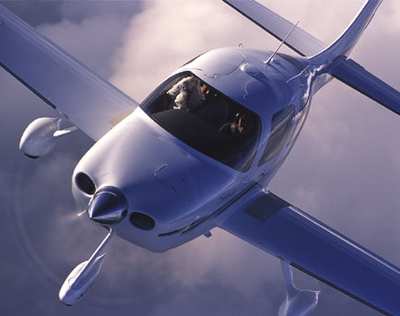Pilot Working An Instrument Rating In Was On Solo Practice Flight Working Towards
The NTSB has released its preliminary report in an accident involving a Cirrus SR22 (similar airplane pictured) which was being flown solo by its owner after receiving dual instruciton in the airplane. The pilot, who was working on an instrument rating, had completed several good landings with the instructor on board, but something went wrong after the instructor exited the airplane. The instructor, who was also a close friend of the pilot, was slightly injured, sustaining burns while attempting to rescue the pilot from the airplane.

NTSB Identification: ERA12FA303
14 CFR Part 91: General Aviation
Accident occurred Friday, April 27, 2012 in Anderson, SC
Aircraft: CIRRUS DESIGN CORP SR22, registration: N154CK
Injuries: 1 Fatal, 1 Minor
This is preliminary information, subject to change, and may contain errors. Any errors in this report will be corrected when the final report has been completed.
On April 27, 2012, about 1300 eastern daylight time, a Cirrus Design Corp. SR22, N154CK, was substantially damaged when it impacted terrain shortly after takeoff from Anderson Regional Airport (AND), Anderson, South Carolina. The certificated private pilot/owner was fatally injured. Visual meteorological conditions prevailed, and no flight plan was filed for the flight. The local personal flight was operated under the provisions of Title 14 Code of Federal Regulations Part 91.
The pilot's flight instructor, and close friend, recounted the events that transpired prior to and during the accident flight. According to the flight instructor, he had been providing the pilot with flight instruction toward his instrument rating in the weeks preceding the accident flight. The purpose of the flight on the day of the accident was to practice flying under visual flight rules. The flight originated at Greenville Downtown Airport (GMU), Greenville, South Carolina about 1000, and they proceeded to Oconee County Airport (CEU), Clemson, South Carolina, where the pilot performed 1 full stop practice landing, then departed for AND. The flight instructor then observed the pilot as he performed about 6 or 7 practice takeoffs and landings, all of which terminated in a full stop and taxi back to runway 23. The pilot then taxied the airplane to the fixed base operator (FBO), where the flight instructor disembarked the airplane and told the pilot to perform 3 additional practice takeoffs and
landings.

The pilot's first solo takeoff and landing appeared normal. During the second circuit, the flight instructor observed the airplane's landing light on final approach to the runway. The airplane appeared to land normally, touching down within the first 10 to 15 percent of the runway. Expecting the airplane to continue down the runway and exit on a taxiway, he was surprised when he saw the landing light begin to ascend. As it approached, he could see that the airplane had pitched upward steeply, to an angle of about 40 degrees. The airplane climbed in that attitude until the left wing suddenly dropped, similar in appearance to an aerodynamic stall. The airplane then descended in a steep, nose-down attitude until the he lost sight of it behind sloping terrain southeast of runway 23.
The initial impact point was located about 250 feet from the left edge of runway 23, at a point about 2,730 feet from the runway threshold. The initial impact point consisted of a 1.5-foot-deep crater that was 7 feet long by 5 feet wide. Located within the crater were two of the three composite propeller blades, which had separated at the propeller hub. An approximate 50-foot wreckage path, oriented about 160 degrees magnetic, led from the initial impact point to the main wreckage. Along the wreckage path were broken pieces of the engine cowling and windscreen. The main wreckage was oriented roughly 330 degrees magnetic, and consisted of the fuselage, wings, and empennage. The fuselage and right wing were almost completely consumed by a post-impact fire.
 ANN's Daily Aero-Linx (04.15.24)
ANN's Daily Aero-Linx (04.15.24) Classic Aero-TV: 'No Other Options' -- The Israeli Air Force's Danny Shapira
Classic Aero-TV: 'No Other Options' -- The Israeli Air Force's Danny Shapira Aero-News: Quote of the Day (04.15.24)
Aero-News: Quote of the Day (04.15.24) Airborne 04.16.24: RV Update, Affordable Flying Expo, Diamond Lil
Airborne 04.16.24: RV Update, Affordable Flying Expo, Diamond Lil ANN's Daily Aero-Term (04.16.24): Chart Supplement US
ANN's Daily Aero-Term (04.16.24): Chart Supplement US




